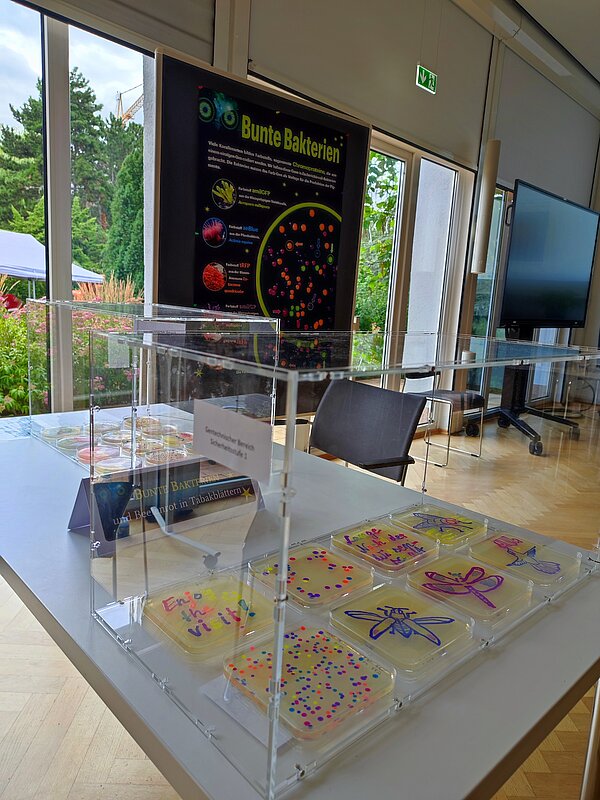Despite the quarterfinals of the European Football Championship taking place at the same time, more than 400 guests visited the IPB for the Long Night of Sciences on July 5th. For the first time, we exhibited gene-edited and transgenic plants and bacteria. The evening was full of interest, questions, amazement and discussion. The CRISPR/Cas plants that glow under UV light, the purple tomatoes and tobacco plants that produce beetroot red, and even more so the colorful bacteria that synthesize coral dye all attracted a great deal of attention and quite some admiration from our guests. There was a great need for information, especially about genetically modified plants, which we met with posters, handouts, information material and, of course, one-on-one dialogue. How to make plants transgenic, how genetic scissors work and what are the differences between conventionally bred plants, plants produced via genetic engineering, and new CRISPR-based breeding techniques - all these topics were intensively explored and debated from every conceivable angle during the event.
For refreshment and entertainment, there was sweet Japanese hydrangea tea and an olfactory quiz, which proved to be quite a challenge for some noses. Those who wanted to see what their fall mushroom collection looked like on agar plates got their chance to see the wide variety of colorful mushroom cultures. All these colors, flavors, aromas and other natural substances are produced by enzymes, and how an enzyme works was demonstrated on a 3D model at the computer modeling booth. Equally impressive was the presentation of column chromatography, a process used to isolate plant and fungal compounds from a mixture of substances. The same principle is used in paper chromatography, where our younger guests learned to separate marker colors into their components.
All in all, it was a very intense and fruitful evening. Another step towards the acceptance of new breeding technologies has been taken.



